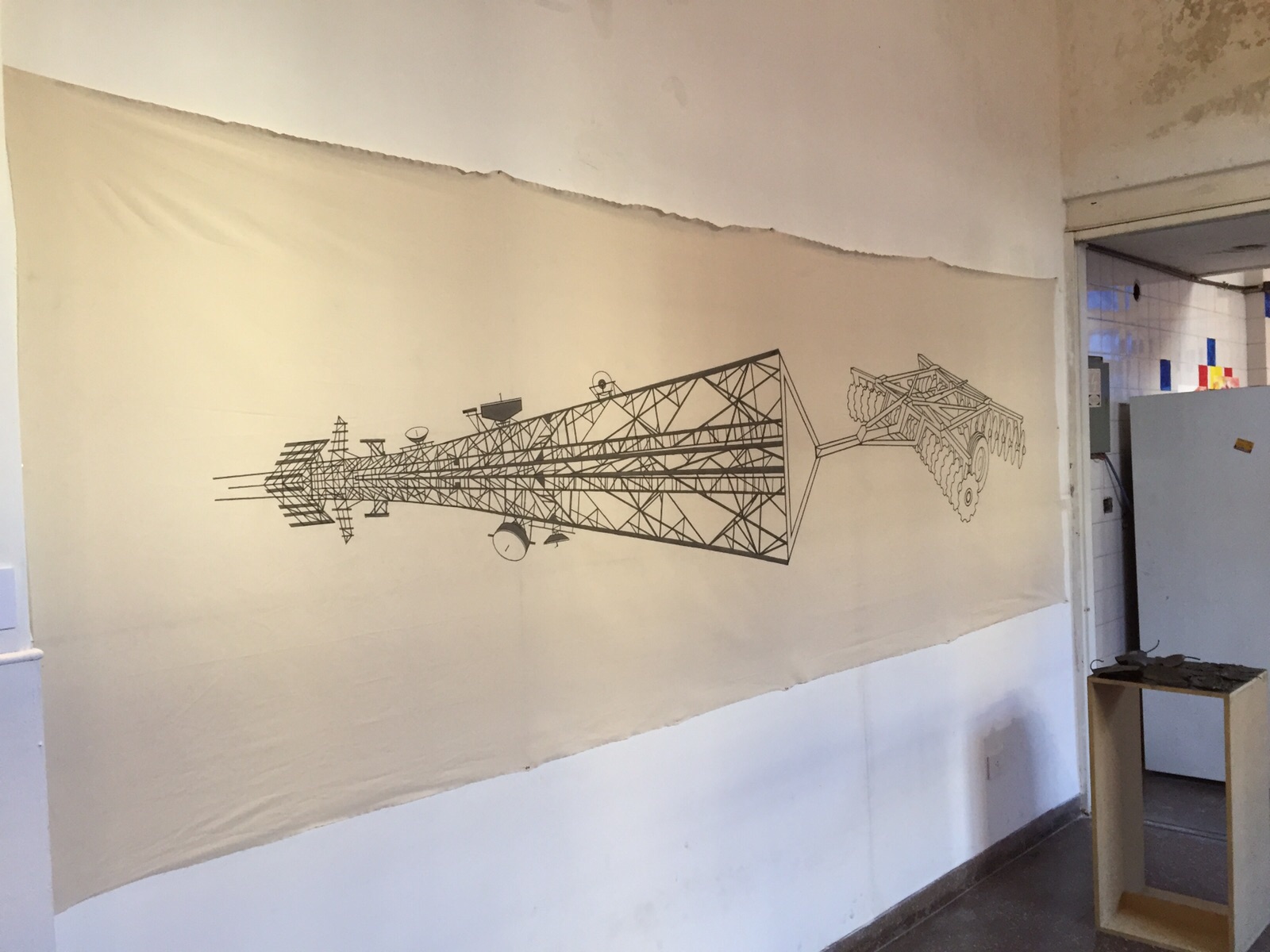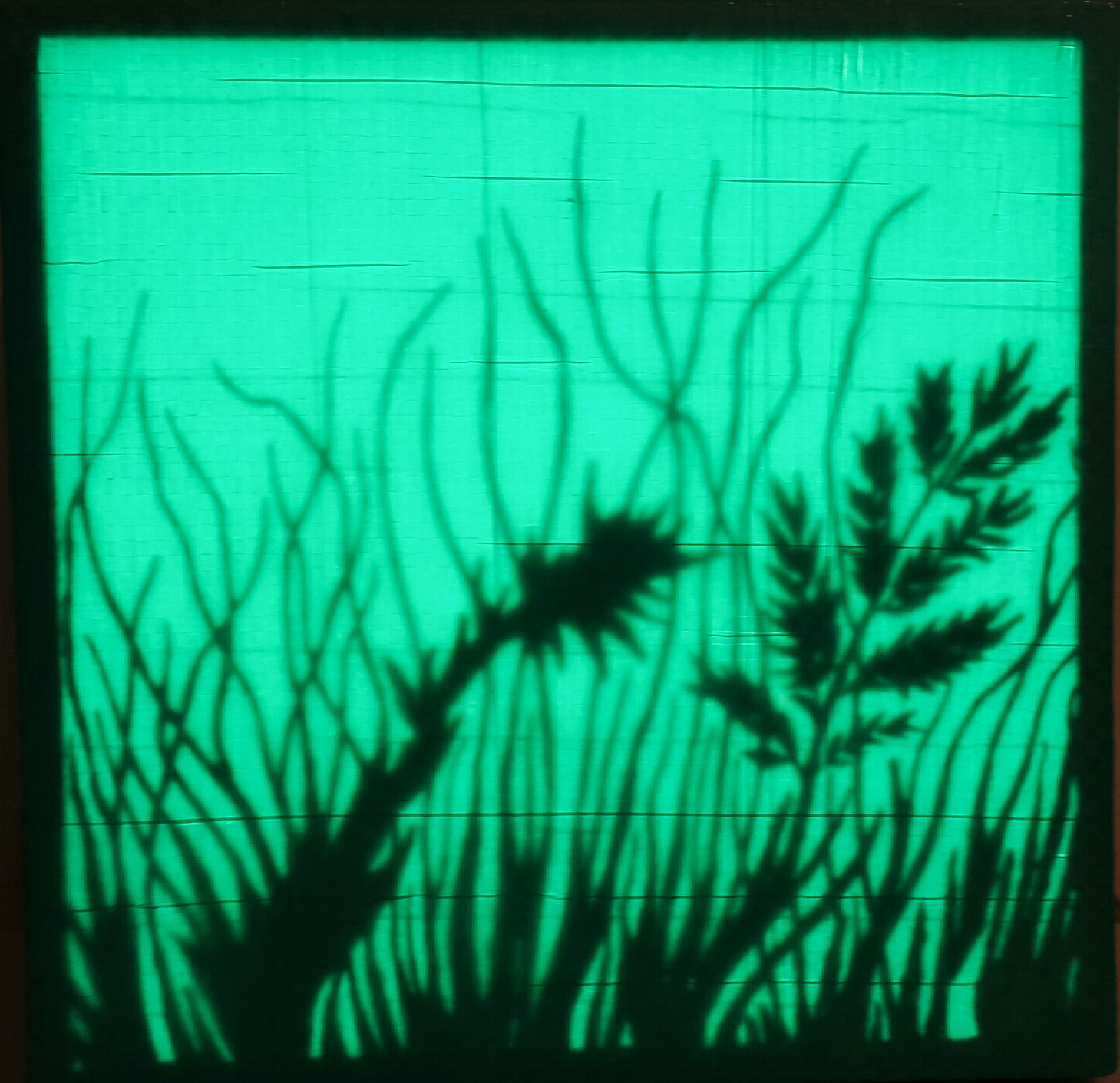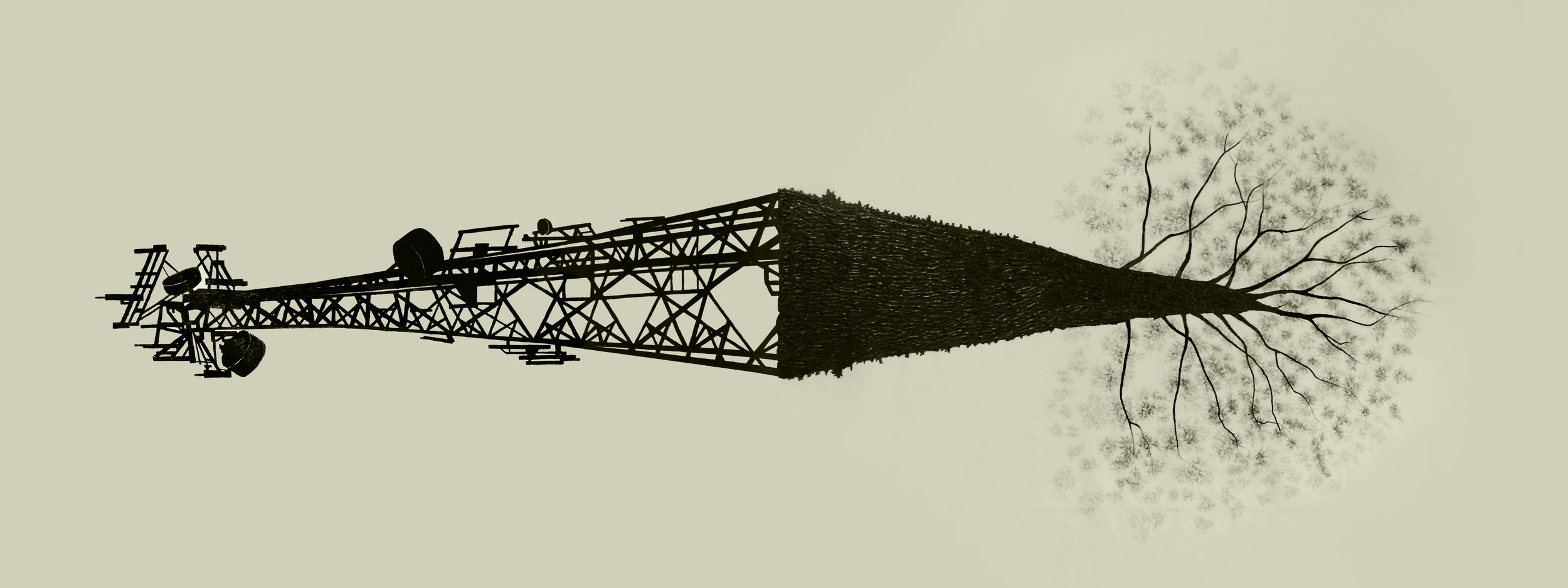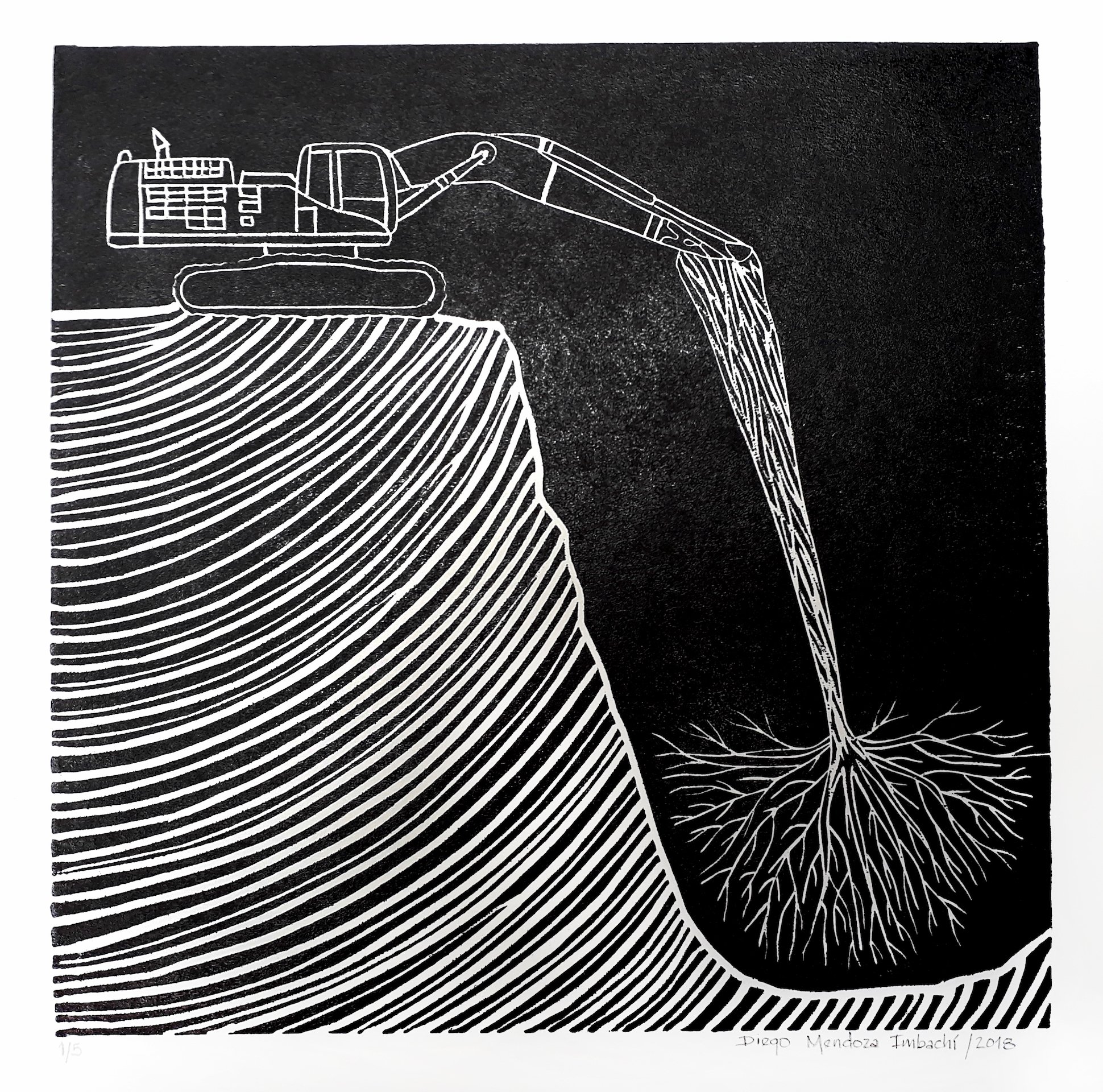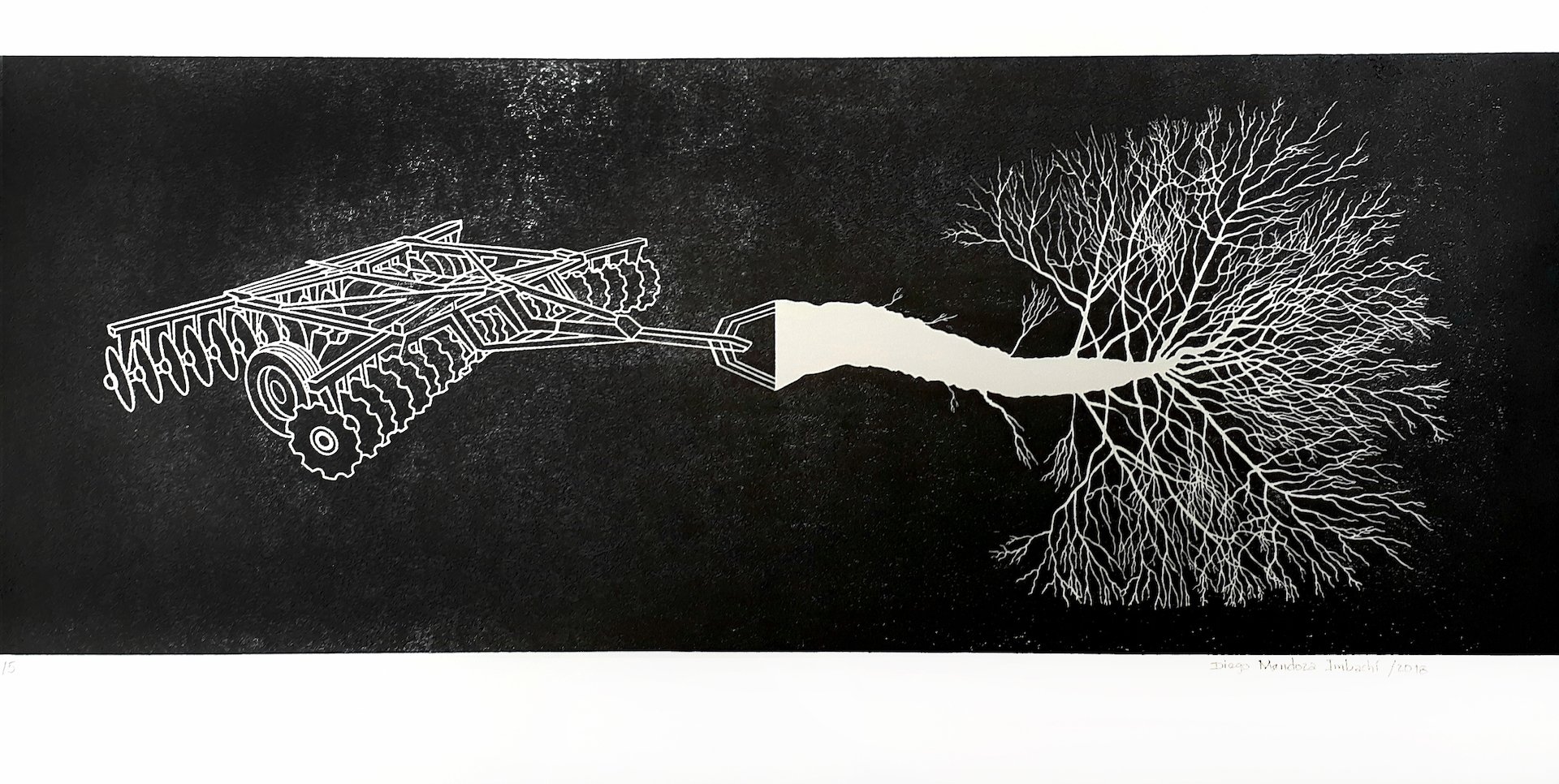Diego Mendoza Imbachí
Cauca, 1982
Mendoza presents an autobiographical work, where nature and science are opposed by the use of graphite agglomerated with natural elements such as leaves of trees and plants. It is a reflection in drawing on the temporary or permanent changes that the landscape of the Cauca (his place of birth) has undergone, by the action of companies of logging and cellular telephony.
This is the focus of his research. There are two heterogeneous elements that identify the relations between the natural and the artificial, the environment and state policies, colonization and land ownership, art history and landscape, and finally globalization and technology.
Diego Mendoza, reconstructs transient scenes, presenting artificial recreations; Understanding the artificial, as something that is not natural, something false. In the series "The Poetics of Shadows" Mendoza uses the green polypropylene fabric, normally used for the isolation of civil works. This polisombra serves as a weak and temporary barrier to the passage and the gaze of the passer-by. The appearance of these green walls are an indicator that what is behind will change, will be built, destroyed or rebuilt. Mendoza recreates images, which in reality are ephemeral, revealing a nature that grows amid the closure and control of barbed wire and industrial fabric.
Winner of the call for Cabinet # 18 of Flora ars-natura (2016); Participant of the Residencias Art Grant, URRA Buenos Aires (2015); Of the collective exhibition Pangea II, New Art from Africa and Latin American, Saatchi Gallery, London (2014); And the First International Biennial of Contemporary Art of Cartagena de Indias, Cartagena (2014).
……………………
Mendoza presenta un trabajo autobiográfico, donde se contraponen la naturaleza y la ciencia, mediante el uso del grafito aglomerado con elementos naturales como hojas de árbol y de plantas. Es una reflexión en dibujo sobre los cambios temporales o permanentes que ha sufrido el paisaje del Cauca (su lugar de nacimiento), por la acción de empresas de explotación maderera y de telefonía celular.
En esto se enfoca la investigación. Se tienen dos elementos heterogéneos en los que se identifican relaciones entre lo natural y lo artificial, el medio ambiente y las políticas de estado, la colonización y la propiedad de la tierra, la historia del arte y el paisaje, y finalmente la globalización y la tecnología.
Diego Mendoza, reconstruye escenas pasajeras, presentando recreaciones artificiales; entendiendo lo artificial, como algo que no es natural, algo falso. En la serie “La poética de las sombras” Mendoza parte del uso de la tela verde de polipropileno, utilizada normalmente para el aislamiento de obras civiles. Esta polisombra funge como una barrera débil y temporal ante el paso y la mirada del transeúnte. La aparición de estos muros verdes, son un indicador de que lo que existe atrás va a cambiar, va a ser construido, destruido o reconstruido. Mendoza recrea imágenes, que en la realidad son efímeras, revelando una naturaleza que crece en medio del encierro y el control del alambre de púas y la tela industrial.
Ganador de la convocatoria para Gabinete #18 de Flora ars-natura (2016); participante de la Beca Residencias de Arte. URRA Buenos Aires (2015); de la muestra colectiva Pangea II, New Art from Africa and Latin American, Saatchi Gallery, Londres (2014); y de la I Bienal Internacional de Arte Contemporáneo de Cartagena de Indias, Cartagena (2014).






